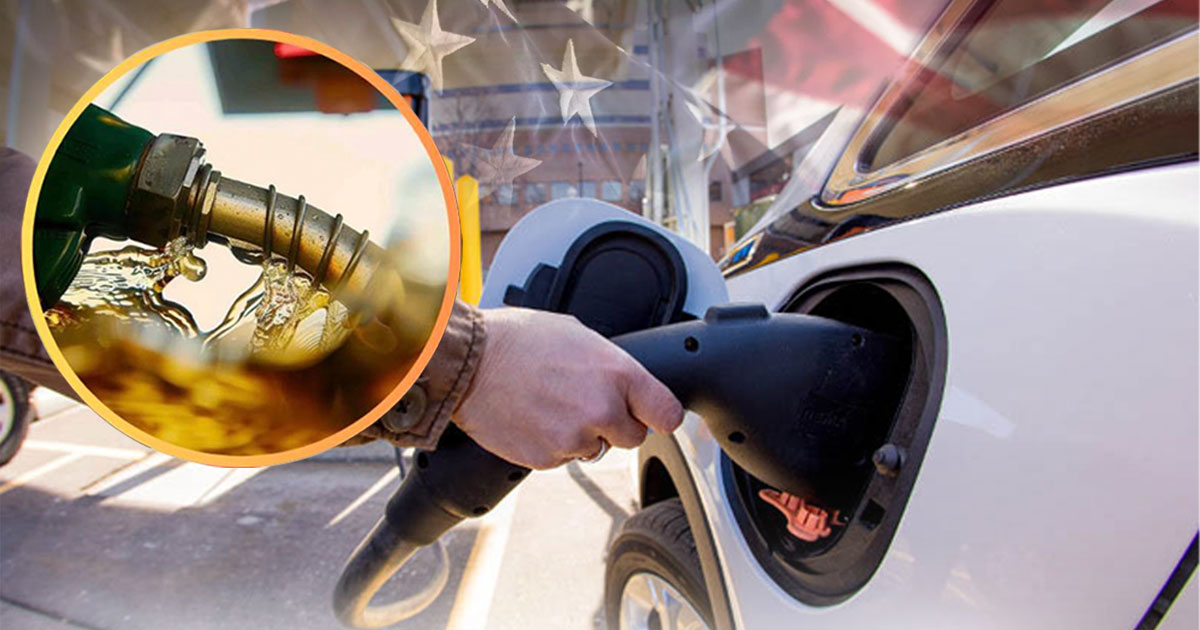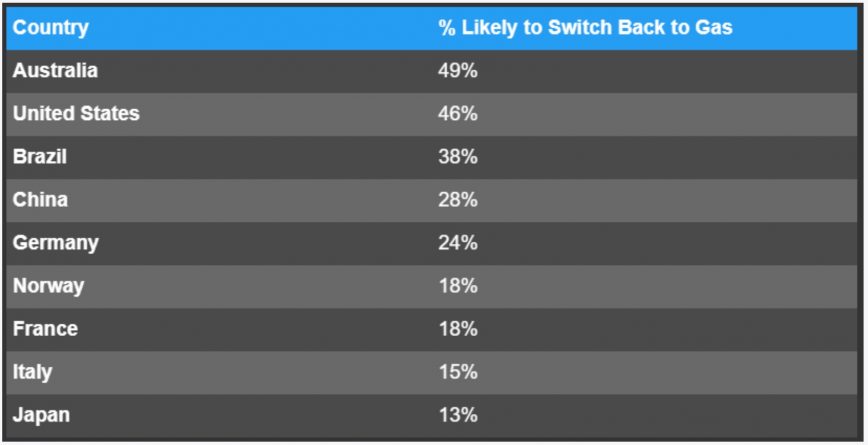Nearly 50% of American EV Owners Want to Ditch Their Electric Cars for Gas

The EV Enthusiasm Decline: What Went Wrong?
A few years ago, the automotive industry seemed poised on the brink of a revolutionary shift. Automakers unveiled ambitious plans to transition their lineups to battery-electric vehicles (EVs), with some even setting deadlines to phase out gas-powered cars entirely. Fast forward to today, and the enthusiasm appears to be waning. Sales are slowing for some brands, consumer interest is diminishing, and almost half of American EV owners are considering a switch back to gas-powered vehicles. So, what’s happening?
The Data Speaks: A Significant Shift
According to McKinsey & Co.’s 2024 Mobility Consumer Pulse study, a staggering 46 percent of EV owners in the United States are inclined to return to gasoline cars. This figure is significantly higher than the global average of 29 percent. The primary reason cited? Inadequate charging infrastructure. Thirty-five percent of global respondents echoed this sentiment, highlighting a widespread issue that isn’t confined to the US alone.
The Charging Infrastructure Dilemma
The US charging network is growing, but it’s still far from adequate. As of May, the country had 183,000 public EV chargers, but this number falls short of meeting the needs of the rapidly increasing number of EV owners. The 2021 Bipartisan Infrastructure Law allocated $5 billion in grants to construct fast chargers, but the rollout has been sluggish, hampered by a complex web of local, state, and federal regulations, as well as varying consumer needs.
This lack of infrastructure creates a significant barrier to EV adoption. For many potential buyers, the fear of being stranded without a charging station nearby is a major deterrent. Even current EV owners are feeling the pinch. Without reliable and widespread charging options, the convenience of gas stations is hard to beat.

Cost and Convenience Concerns
Aside from infrastructure issues, cost remains a significant barrier. Thirty-four percent of global respondents mentioned that the cost of EV ownership is still too high. While the price of EVs has been decreasing, they remain more expensive upfront compared to their gasoline counterparts. Additionally, the cost of installing home chargers and the variability in public charging prices add to the overall expense.
Moreover, 32 percent of respondents cited the impact of EVs on their driving patterns during long trips as a concern. Long-distance travel in an EV requires meticulous planning and can be stressful, especially if charging stations are sparse. The inability to charge at home was a problem for 24 percent of respondents, and 21 percent mentioned the stress of worrying about finding a charging station as a significant issue. Only 13 percent said they did not enjoy the driving experience, suggesting that the primary concerns are logistical and financial rather than experiential.
The Global Perspective: Varying Sentiments
Interestingly, the inclination to switch back to gas-powered vehicles varies widely across different countries. In Australia, known for its vast, sparsely populated interior, 49 percent of EV owners are considering a return to gasoline. This figure is even higher than in the US, reflecting the unique challenges of maintaining a comprehensive charging network in such a large country.
Conversely, in Japan, only 13 percent of EV owners might switch back to a combustion-powered vehicle. This low percentage is likely due to Japan’s robust urban infrastructure and the shorter average travel distances, which make EV ownership more convenient.
Other countries below the worldwide average include Italy (15 percent), France (18 percent), Germany (24 percent), and China (28 percent). Brazil joins the US and Australia above the average at 38 percent, indicating that infrastructure and convenience issues are not confined to developed nations alone.
Automakers’ Dilemma: Navigating a Changing Landscape
The disparity in EV adoption and satisfaction rates puts automakers in a challenging position. They must balance their global strategies to cater to markets with vastly different needs and levels of infrastructure development. This situation often results in disjointed efforts, as manufacturers struggle to maintain momentum in regions with less enthusiasm for EVs while capitalizing on markets with higher adoption rates.
For instance, automakers have found more success in Europe and China, where government incentives and robust charging networks support EV growth. In contrast, the US market has proven more challenging due to its vast geography and slower infrastructure development.
The Future of EVs: Potential Solutions
Despite the current challenges, the future of EVs is not entirely bleak. Several potential solutions could address the issues hindering wider adoption. Firstly, accelerating the development of charging infrastructure is crucial. This requires coordinated efforts between federal, state, and local governments, as well as private sector investments. Expanding the number of fast chargers and ensuring they are strategically placed can alleviate the range anxiety that many EV owners experience.
Secondly, reducing the cost of EV ownership through incentives and subsidies can make these vehicles more accessible. Governments can play a pivotal role by offering tax credits, rebates, and other financial incentives to lower the upfront cost of EVs and the installation of home charging stations.
Technological Advancements: A Beacon of Hope
Technological advancements also hold promise for the future of EVs. Improvements in battery technology can increase range and reduce charging times, making EVs more convenient for everyday use. Solid-state batteries, for example, are expected to offer greater energy density and faster charging capabilities than current lithium-ion batteries.
Moreover, the development of wireless charging technology could revolutionize the way we power our EVs. Imagine a world where you can charge your vehicle simply by parking it over a charging pad. This technology is still in its infancy, but it holds great potential to simplify the charging process and enhance convenience.
Consumer Education and Awareness
Another critical factor is consumer education and awareness. Many potential EV buyers are still unfamiliar with the benefits and practicalities of owning an electric vehicle. Comprehensive education campaigns can dispel myths, provide accurate information, and highlight the long-term cost savings and environmental benefits of EVs.
Automakers and governments can collaborate to create informative resources, host EV fairs, and offer test drives to allow consumers to experience EVs firsthand. Building awareness and familiarity can go a long way in increasing confidence and interest in electric vehicles.
Conclusion: The Road Ahead
The current landscape for EV adoption in the United States presents significant challenges, but also opportunities for growth and innovation. Nearly half of American EV owners consider a return to gas-powered vehicles is a wake-up call for automakers, policymakers, and infrastructure developers. Addressing the issues of charging infrastructure, cost, and convenience is essential to reversing this trend and ensuring the continued growth of the EV market.
While the path forward may be complex, the potential rewards are substantial. By investing in infrastructure, advancing technology, and educating consumers, the dream of a widespread transition to electric vehicles can become a reality. The road ahead is full of twists and turns, but with determination and innovation, we can navigate these challenges and drive towards a more sustainable and electrified future.

